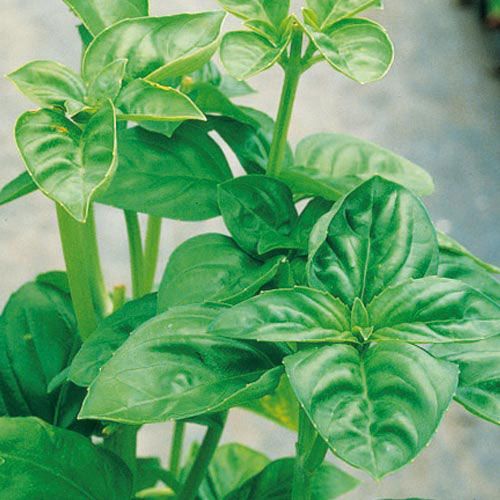I’ve grown herbs since my college days when I grew tomatoes and basil on the porch of my apartment. Herb gardening snowballed from there. It’s a great way to save money. A seed packet for Flat Italian Parsley costs less than a bunch of fresh parsley at my super market and gives me way more than I can use in a week. And I can certainly justify spending money on a packet of cilantro if it means I can make homemade guacamole and toss fresh sprigs in my salad for a few weeks.
Growing herbs indoors is just as rewarding. Not only do I have steady supply of fresh herbs to add to recipes and salads, but the herbs make wonderful houseplants. They brighten a room and fill the air with a fresh fragrance.
An indoor herb garden doesn’t take up much room, making it perfect for apartments and small homes. Some of the best herbs for growing indoors are basil, oregano, parsley, thyme, rosemary, sage, mint, and cilantro.
With a little planning, you can grow a few of your favorite herbs in containers or small pots or you can grow a little herb garden indoors. Here is a guide for how to grow herbs indoors.
How to Grow Herbs Indoors
When growing herbs indoors, you can either start with plants or start herbs from seed. With either route, you will need a container with drainage holes and either a saucer or tray to place under the pots. This will protect your windowsill or other surfaces from water stains or damage.
If buying plants, make sure they are free of insect pests before bringing indoors. Transplant them to your own containers using a good quality potting soil.
It starting herbs from seeds, you’ll need seeds, a quality potting mix and containers. Grow lights are often recommended. A seed starting kit is a convenient option. For more seed starting tips, click here.
Which Herbs Grow Well Indoors?
Basil is one of the most popular herbs for growing indoors. It’s easy to start from seed, looks and smells great, and is easy to grow. Other easy herbs to grow indoors include oregano, parsley, thyme, rosemary, sage, mint, and cilantro.
Where to Start Your Indoor Herb Garden
Most herbs need 6 or more hours of direct sunlight daily. South-facing windows are best for most herbs. Herbs, such as mint, parsley and cilantro, require a little less light and can be set near east or west-facing windows. If you don’t have a place that receives that much sunlight, or during the winter months, a grow light is a great option.
When to Plant Herbs Indoors
Many people move herbs outdoors during the summer months and then bring them indoors when the weather cools. If starting herbs indoors, it’s more difficult in winter unless you have a grow light. Seeds and plants usually don’t receive enough natural sunlight indoors to thrive during the winter months. If you want a fresh supply of herbs over the winter months, then starting seeds in early fall is an option.
Indoor Herb Garden Care
Room Temperature
Herbs grow well at temperatures of 65-70 degrees F. Keep in mind that the temperatures near a window fluctuate, often being cooler on winter nights and hotter on summer days, than the temperature near the center of the room.
How to Water Indoor Herbs
The most common watering problem with indoor herbs is overwatering them. Rosemary, thyme, oregano, and sage prefer drier conditions. Consider planting them in terra cotta pots which absorb water. Some herbs, including mint, basil, and parsley, prefer moist, but not waterlogged, soil. If the plants are wilting or turning yellow, they may be getting too much water.
How to Harvest Indoor Herbs
When harvesting indoor herbs, never snip off more than one-third of the plant. Either pinch off the leaves or use kitchen shears to cut off the leaves. Harvesting encourages new growth—but the trick is not to take too much foliage that it causes the plant stress.
Transplanting
If your herb plants are growing well, they may be to be repotted into a larger pot—or you might want to move them outdoors. If the roots are coming out of the drainage holes, it’s a sign that the plant needs a bigger pot. Choose a larger pot with drainage holes and use a quality potting mix for repotting.
If you want to move your herb plant outdoors, wait until all danger of spring frost has passed. Gradually acclimate the plant to the outdoors. Many gardeners may keep the plant on a sheltered porch for several days or provide the plant with some protection in the garden.


